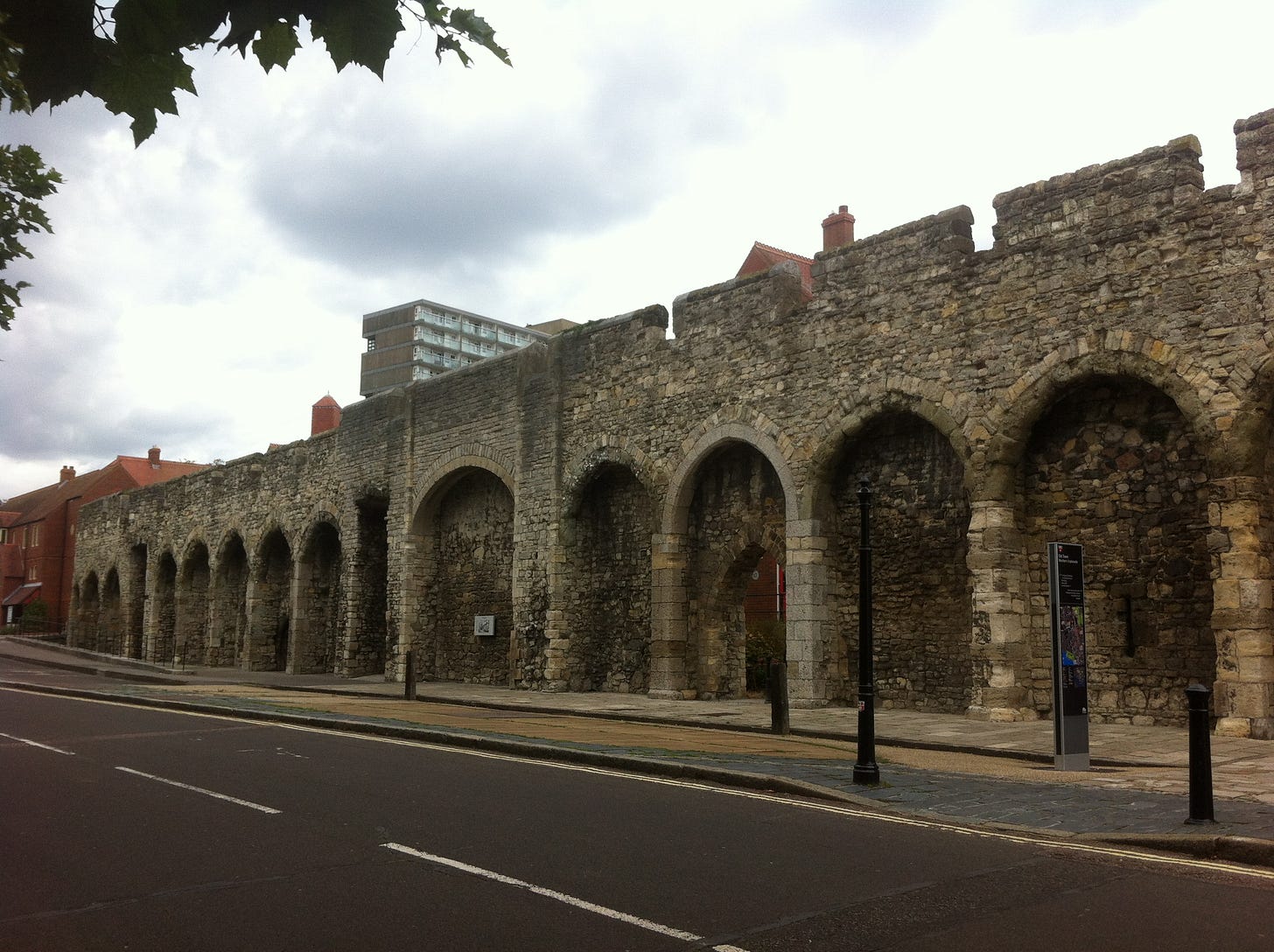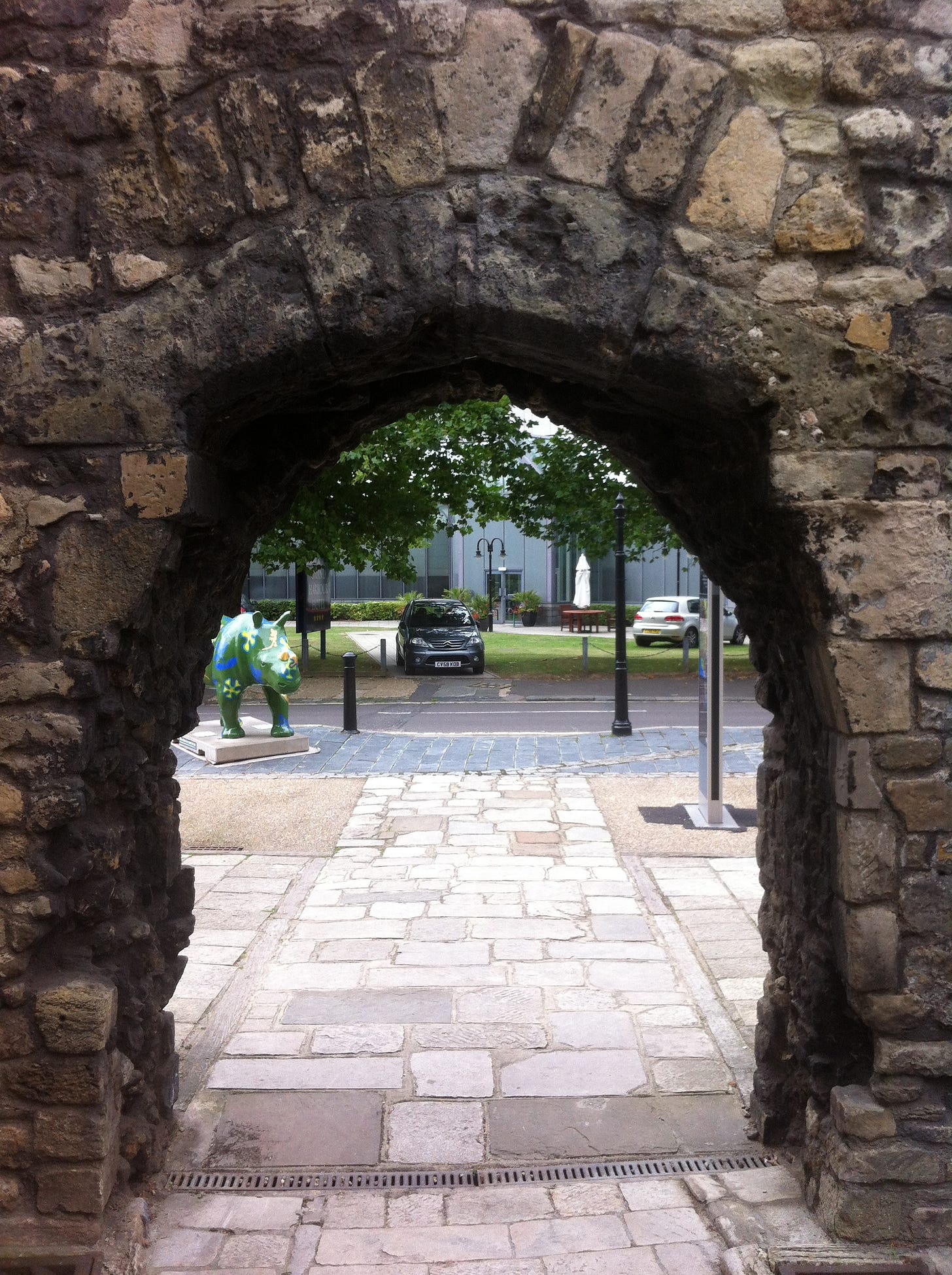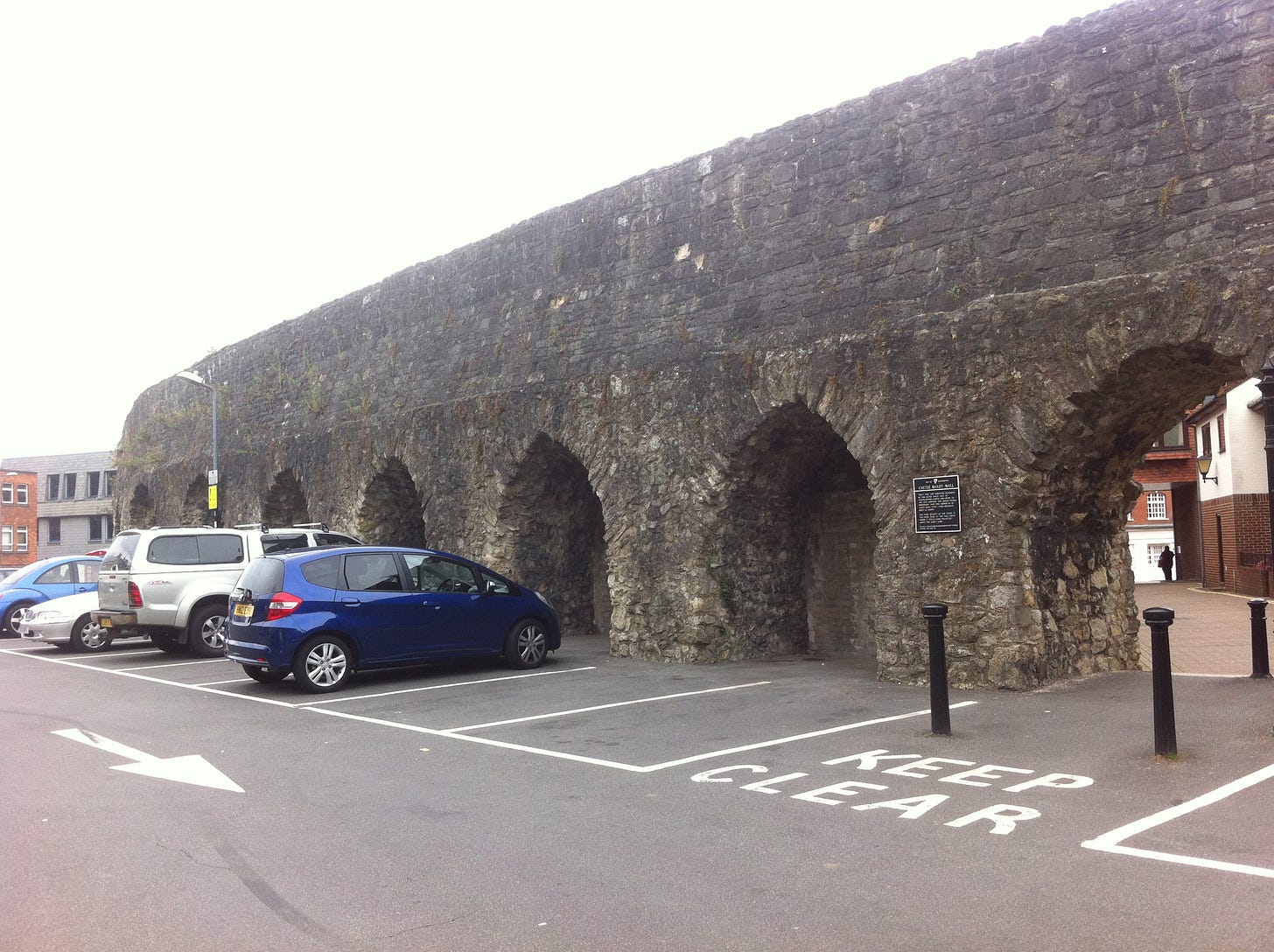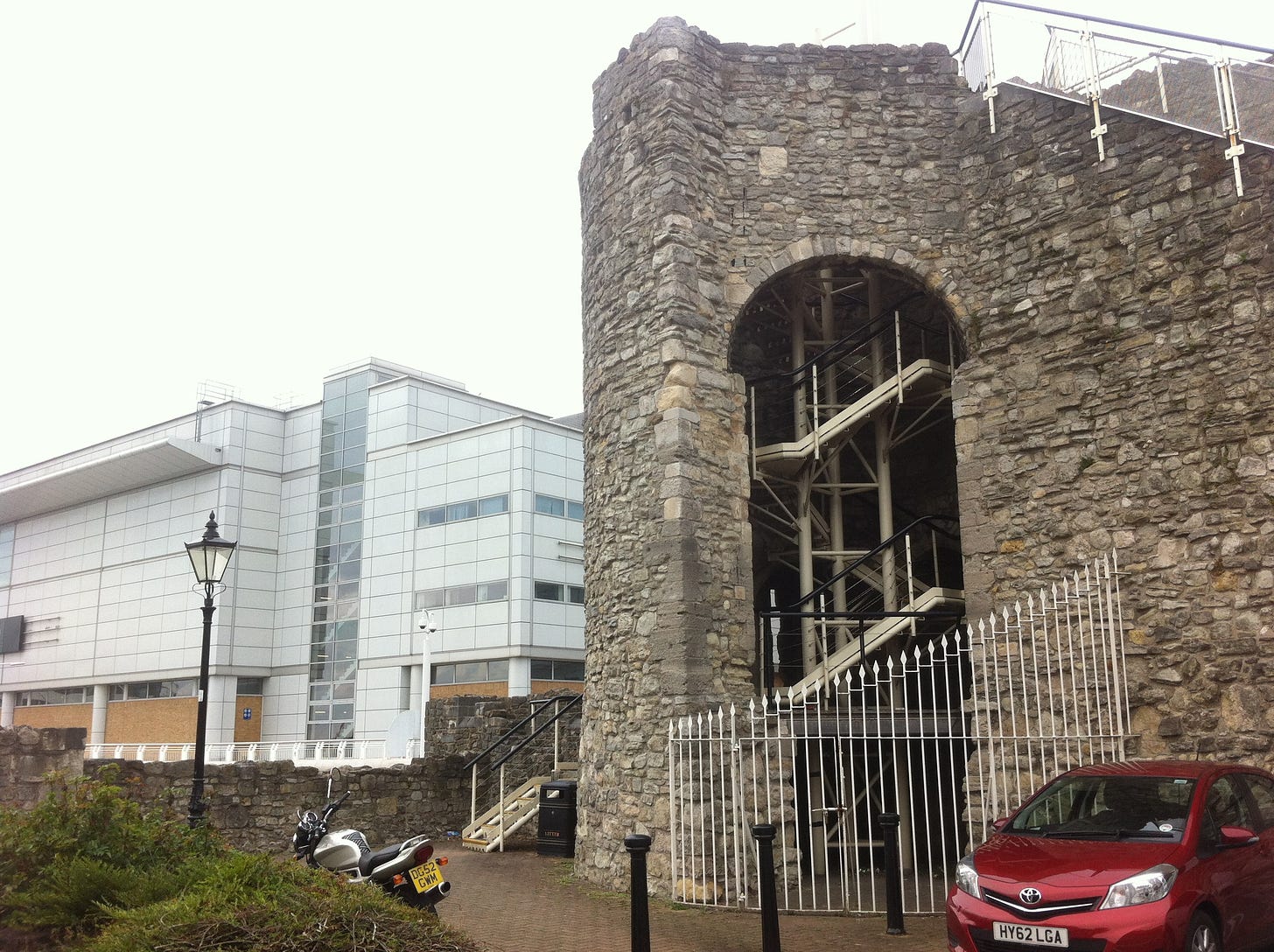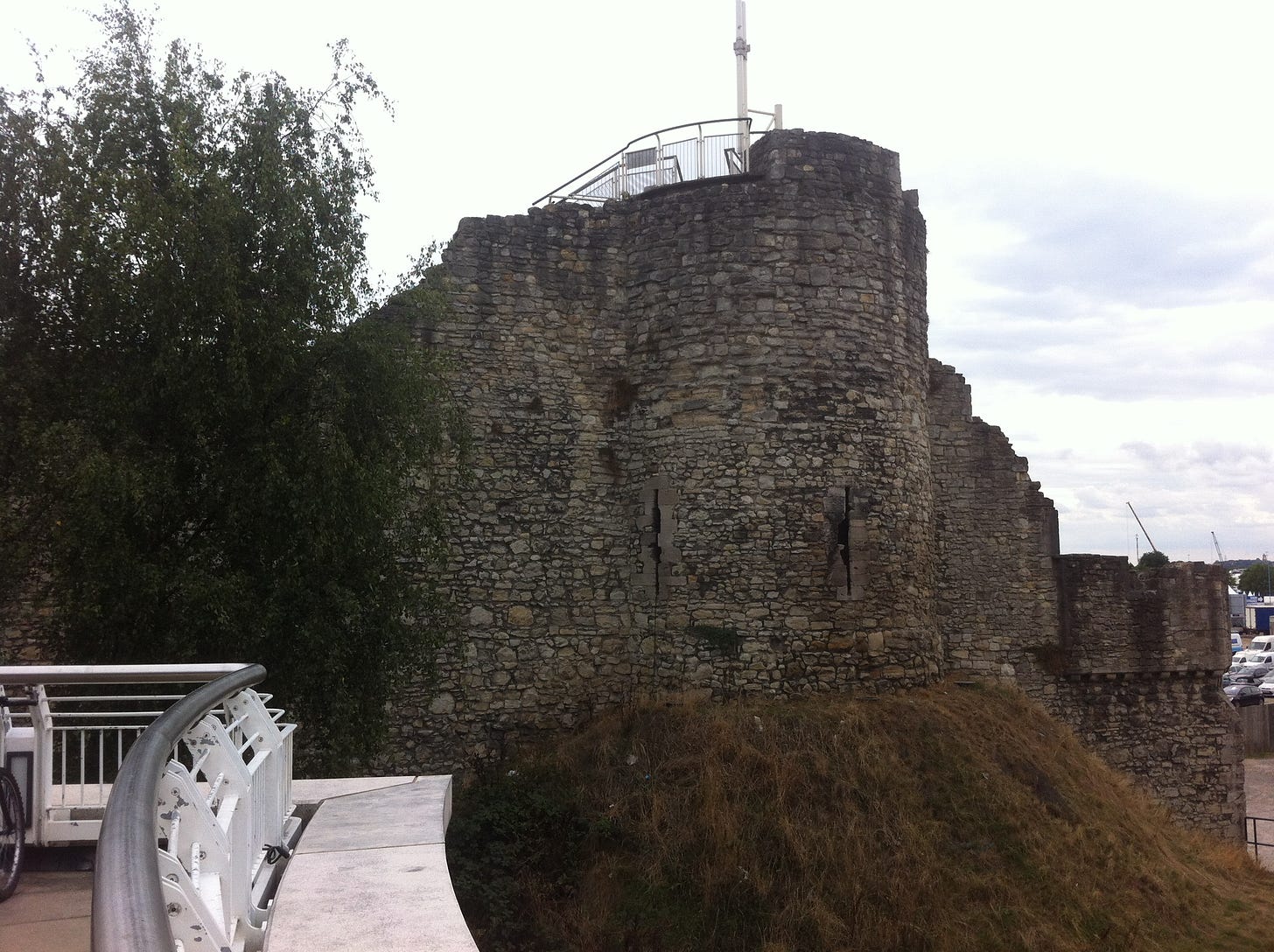Greetings Gold and Silver Level Templars! Let’s go to the English city of Southampton which is slowly surrendering the secrets of its medieval past.
Southampton is a port city on the south coast of England, famous for being the departure point for the ill-fated Titanic on its doomed voyage to America in 1912. But there's more to Southampton than the Titanic. This city was a prosperous centre of trade and military activity in the medieval period. The old town still gives glimpses of its incredible past.
After the Normans invaded England in 1066, there was an influx of wealthy people from Normandy, across the English Channel. They basically barged Southampton's Saxons out of the way - and out of their homes - to colonise part of the city. These newcomers built a church dedicated to Saint Michael, the patron saint of Normandy. The church is still there - most of it dating from the 12th century with later additions. There is also a font made from Tournai marble, one of only seven in England.
The main street in the Norman part of Southampton was called Bull Street - now known as Bugle Street. In the late 12th century, the wealthiest resident in the area - Gervase le Riche (appropriate surname!) - built West Hall, an imposing medieval residence. Many of the Norman residents replaced earlier wooden abodes with stone dwellings. These builders of sturdy homes included Master Roger - brother of Gervase - Roger de Tankerville, John de la Bulehuse, and Walter le Fleming.
Two of these Norman stone houses survive, in ruins, and are referred to as King Canute's Palace and King John's Palace. In fact, neither building has anything to do with Canute or John. The latter "palace" (actually a large home) was later incorporated into the hurriedly built city walls in the 1330s, following raids by the French. Blame 19th century historians for making the false connection between these buildings and kings of England.
When Henry II (1133-1189) became king of England, he also brought with him a big empire in what is now modern France. Henry had inherited the Duchy of Normandy and was also Count of Anjou. His empire was named after Anjou: the Angevin Empire. It also encompassed the Duchy of Aquitaine (most of south west France), as his wife, Eleanor, was the duchess. As a result, Henry ruled more of France than the actual king of France.
This meant a massive increase in trade between England and his Angevin Empire, which boosted Southampton's fortunes. Gascony was at the heart of the duchy of Aquitaine and from the port of Bordeaux came fine wines that landed in Southampton. But war with France, from the 1200s onwards, forced the city to hide behind increasingly bulky fortifications. And those living beyond the walls, were encouraged to relocate inside.
This revived the fortunes of the previously Saxon part of town, known as Holy Rood. The surviving timber cottages from the pre-Norman period, and after, were torn down and replaced with stone. Basically, Holy Rood became gentrified. Semi-rural activities were replaced with sophisticated urban trading. The old habit of living cheek by jowl with livestock disappeared as the new rich demanded comfortable - and cleaner - living.
In the 12th century, the blood of slaughtered animals ran through streets all over the city. But by the 13th century, this smelly activity was restricted to the market areas. The bones of sheep, goats, pigs, and horses have been discovered by archaeologists. Rabbit and poultry became more common over the years, suggesting an increase in refined dining.
And that's further evidenced by the remains of plants used for cooking and eating. In the early medieval period, it was all nettles and elderberry. By the later medieval period, we find remains of grapes, figs, raspberry, strawberry, sloe, plums, hazelnuts, and walnuts.
So, a few things you may never have known about medieval Southampton:
The town got raided over and over by the Vikings to the point where King Alfred ordered Hamtun (or Hamwic as some sources call it) to use their Roman walls to fortify the place and stand up to the marauding Scandinavians
However, the treacherous folk of Hamtun declared the Viking chieftan Canute as King of England when he landed there - maybe they didn't have too much choice in the matter!
There was an influx of Normans after the victory of William the Conqueror at Hastings down the coast. Most of the Normans seemed to have lived in what is called French Street (how appropriate). There was also once an English Street.
The local castle and noble houses started out in wood but were then rebuilt in stone as happened in most of England
Southampton exported wool to the continent and imported a lot of wine from the continent - basically, England clothed France while the French got the English drunk
In 1338, rather lousy fortifications allowed a force of French and Silicians to creep up on the townspeople while they were in church hearing mass and carry out a massacre. The survivors then tracked down the French and Sicilians and slaughtered them as they fled for their boats.
Winding through car parks, over a main road and through a housing estate is the remains - impressive in parts - of the city's medieval walls. I took some photos while I was there the other day and they've been well maintained. Worth a look if you're ever in that part of the world.
If you would like to know more about the Knights Templar, then get your hands on a copy of my book: The Knights Templar – History & Mystery. Published by Pen & Sword and available on Amazon, Waterstones, Barnes & Noble, and WHSmith. Don’t miss out on your copy!






